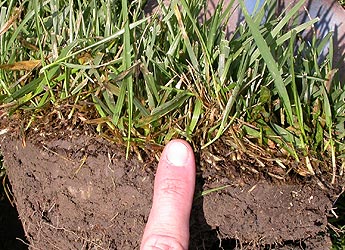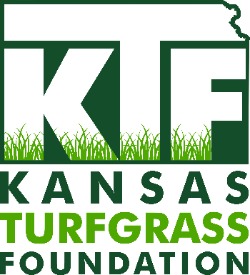Thatch


Thatch is a tightly intermingled mat of dead, decaying and living stems, leaves, crowns and roots that forms between the soil surface and the turf canopy as the turf matures. Many people perceive any amount of thatch to be a concern. A thin thatch layer, ½ inch, is actually beneficial because it provides a resilient surface, cushions those who use it, and improves traffic tolerance. Additionally, the thatch layer can protect the crown of the turf plant from wide environmental temperature swings. A thick thatch layer, > ½ inch, is undesirable because it becomes hydrophobic and sheds water during irrigation or rainfall. Furthermore, thatch is an excellent environment for pathogenic fungi growth, harbors undesirable insect pests like the white grub and interferes with pesticide applications and over-seeding operations. Lastly, a thick spongy thatch layer is conducive to mower scalping when the mowing equipment sinks into the canopy. One of the most common myths regarding thatch is that mowing too tall or leaving clippings on your lawn causes thatch. This is simply not true! Clippings are comprised mostly of water and cellulose. As they dry they filter into the canopy and quickly subject to microbial decomposition. By contrast, stems like rhizomes and stolons contain lignin which degrades slowly. When stem accumulation exceeds microbial decomposition thatch forms.
Occurrence
Thatch is most commonly found in lawns with turfgrass species that possess lateral spreading stems called rhizomes and stolons. This includes species like Kentucky bluegrass, creeping red fescue, bermudagrass and zoysiagrass. Heavily fertilized, and irrigated lawns are most susceptible to serious thatch accumulation.
Non-Chemical Control
- Plant upright, bunch-type grasses like turf-type tall fescue or perennial ryegrass which do not form thatch.
- Make sure that turf is grown on well drained soils which provide the environment most conducive for microbial activity and thatch decomposition.
- Avoid over-fertilizing and over-irrigating thatch prone species.
- Where thatch forming grasses are cultured, thatch removal by annual core aeration and/or a dethatching with a vertical mower or power-rake is strongly recommended. In addition to removing thatch these practices also bring soil to the surface which intermingles with the thatch and speeds thatch decomposition. The soil brought to the surface intermingles with the thatch, firrming and diluting the thatch layer. This will help reduce mower scalping. The ideal time to implement any invasive activity like aeration is when the turf is healthy and actively growing. For cool-season turfgrasses this corresponds to spring or fall and mid-summer for warm season turfgrasses. Lastly, any debris brought to the surface must be removed quickly so it does not shade the underlying living turf.



